You’re on the beach. It’s a beautiful day. Suddenly, you realize that you’ve been scratching your ankles a lot, and you look down to see some tiny black dots on your skin. Are they sand fleas? What are sand fleas? Let’s talk about sand fleas and what they can mean for your beach vacation.
There are three types of animals commonly known as sand fleas. These include chigoe fleas (jiggers), sand flies (biting gnats), and the whole Emerita genus (sand crabs). Most are quite harmless, but jiggers (Tunga penetrans) are parasitic and can be very dangerous.
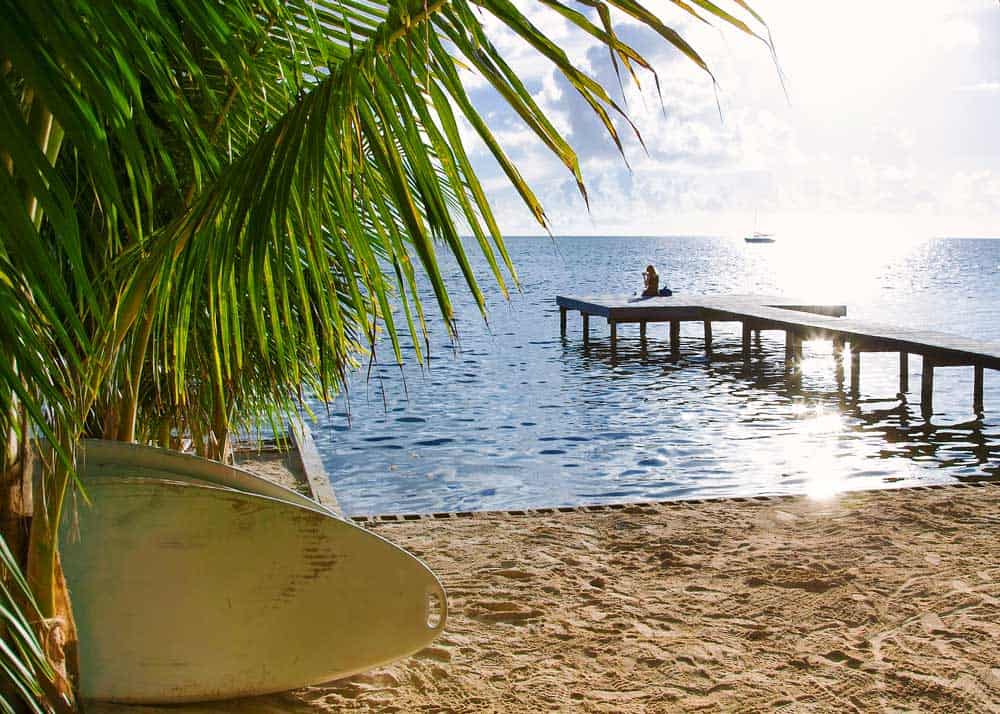
Here’s the full breakdown of these three types of sand fleas.
Table of Contents
1. Sand Flea (Tunga penetrans)
Scientific name: Tunga penetrans
Common names: Sand flea, chigoe flea, jigger, jigger flea
Native Location: South and Central America, Coastal Africa (sub-Saharan)
Size: Less than one millimeter
Habitat: Sandy areas such as beaches, stables, and farms
Distinguishing feature: Round, engorged, and tick-like bodies
Risk: Severe
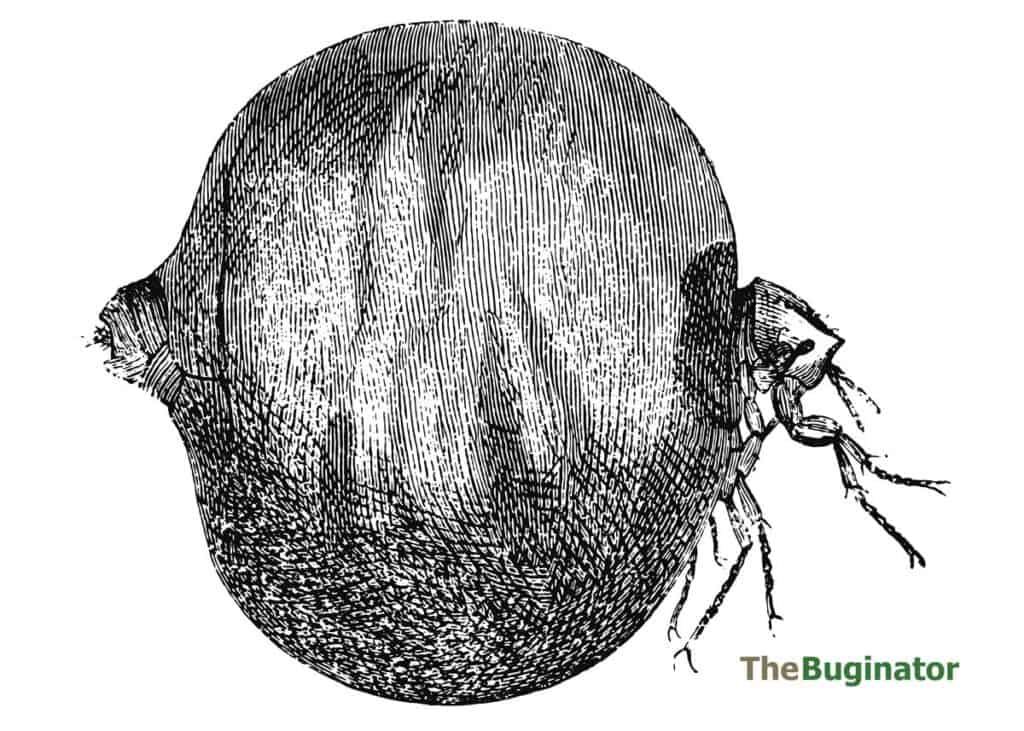
This is the “true” species of sand flea. It’s found throughout the beaches of the Caribbean, and it can be a danger to anyone who lives or stays by the water, including everyone from tourists to locals.
What makes it so dangerous? It’s nauseating to think about, but this type of sand flea burrows into the feet of human hosts to help it lay eggs. You won’t notice the initial bite, but an infestation can cause all kinds of painful infections (tungiasis) over time, including life-threatening ones like gangrene.
Beware of this species of sand flea. If you suspect you’ve been bitten, seek medical attention.
The Tunga penetrans sand flea is the world’s smallest known flea.
2. Sand Fly (Biting Gnats)
Scientific name: Ceratopogonidae
Common names: Sandfly, no-see-um, biting midge, biting gnat
Native Location: Worldwide
Size: 2 – 5 millimeters
Habitat: Warm and moist landscapes, including beaches and gardens
Distinguishing feature: Long, thin, mosquito-like bodies
Risk: Mild
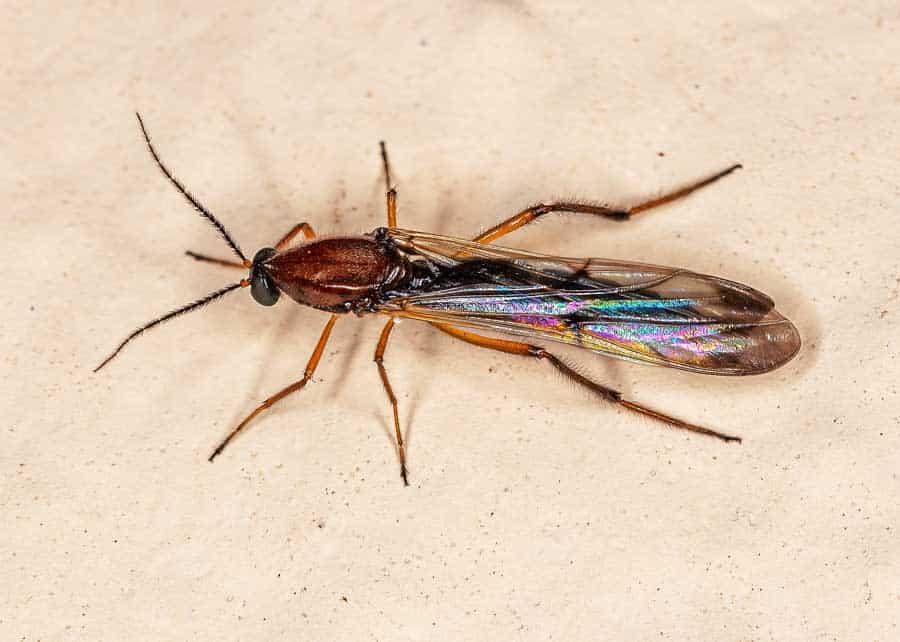
Befitting their name, sand flies or “no-see-ums” are tiny creatures that can be even smaller than fleas.
They can be distinguished by the naked eye, but since they’re basically black dots, it can be hard to notice any difference between them and other black dots in the average clump of sand.
The bite of the biting gnat can be a painful one, especially if you make it worse by scratching. It’s a red, itchy kind of bite that often leaves behind big welts.
The good news is that this type of sand fly bites aren’t particularly dangerous. You can treat them with anti-itch and anti-inflammatory creams, and they’ll generally go away on their own.
3. Sand Crabs and Bugs (Emerita)
Scientific name: Emerita
Common names: Sand crab, sand bug, mole crab
Native Location: North and South America, Africa, Australia
Size: 8 – 37 millimeters
Habitat: Tropical areas, including beaches
Distinguishing feature: Barrel-shaped bodies with hard exoskeletons
Risk: None
Sand crabs are small crustaceans that live around coastal regions, including both sides of the United States. They have hard exoskeletons that are sometimes mistaken for shells.
Sand crabs pose no danger to humans. They don’t bite or even pinch, so if you see them, you can just leave them alone. They’re probably rifling through the sand in search of a snack.
If they see you, they’ll most likely panic and burrow under the surface as fast as they can; not only are they naturally nervous, but people in many countries like to catch them and fry them! If you’re traveling overseas, don’t be surprised to see sand crab as street food.
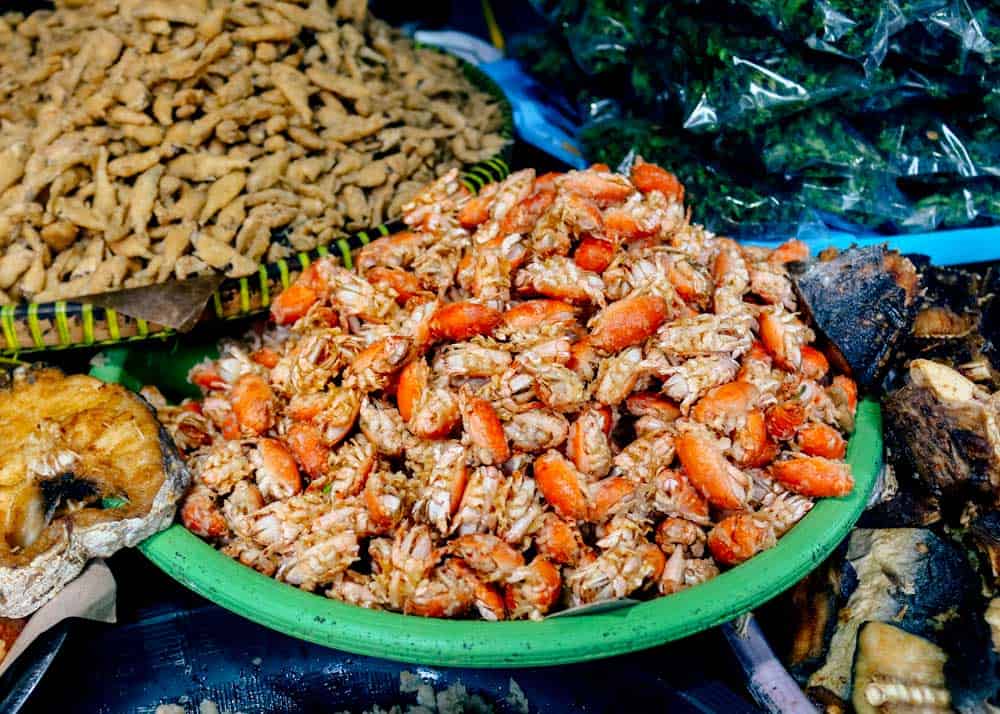
11 Known Species of Emerita (Sand Crabs)
Here are the known species of sand crabs.
- Emerita analoga: Western North and South America
- Emerita austroafricana: Southeastern Africa and Madagascar
- Emerita benedicti: Gulf of Mexico
- Emerita brasiliensis: Eastern Brazil
- Emerita emeritus: South Asia and Southeast Asia
- Emerita holthuisi: Western India, Persian Gulf, and Red Sea
- Emerita karachiensis: Pakistan
- Emerita portoricensis: Caribbean Sea
- Emerita rathbunae: Western Central America
- Emerita talpoida: Eastern North America
- Emerita asiatica: Southern India
The Emerita genus (sand fleas) are small decapod crustaceans. They are often listed among other animals in the genus Emerita, including sand crabs, sand bugs, and mole crabs.
14 Sand Flea Facts
How many types of sand fleas are there?
The one “true” type of sand flea is known as Tunga penetrans. These are the microscopic fleas that live in the sand and burrow into the skin of human hosts.
There are several other creatures, however, that are erroneously called sand fleas.
These include:
- Sand flies (Ceratopogonidae or Tabanidae)
- Sand crabs or sand bugs (Emerita)
- Chiggers (Trombicula)
Chiggers don’t live in the sand, but their name is quite similar to jigger, which is a nickname for the true sand flea. This can cause confusion for some folks. Here are the differences between chiggers vs jiggers.
How are true sand fleas different from other sand creatures?
There are many differences between the critters that get lumped together as “sand fleas,” including the danger that they pose to humans. Sand crabs, for example, don’t bite humans at all.
Sand flies deliver small but harmless bites that can be treated with over-the-counter remedies.
True sand fleas deliver painful and debilitating bites that can be life-threatening.
Here are 11 ways to treat and prevent sand flea bites.
What are other names for sand fleas?
The sand flea has many names, including jigger, jigger flea, and chigoe flea.
Other names from around the world include Brazil’s bicho de pe (“foot bug”) and Argentina’s pique (“itch, sting”).
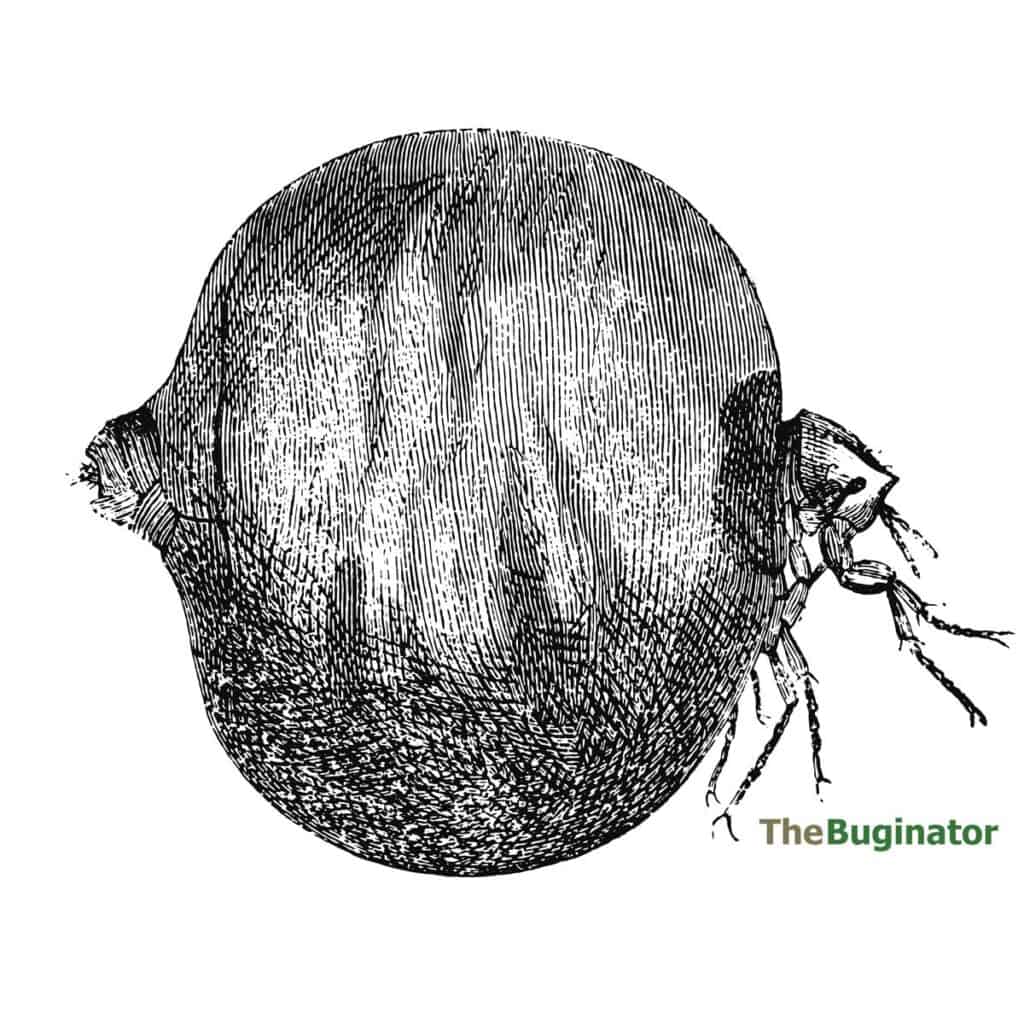
Hate sand fleas? Here’s how to get rid of sand fleas.
Where do sand fleas live?
Sand fleas are native to South and Central America. They can be found in countries like Brazil, Argentina, Uruguay, Peru, and Panama as well as the greater Caribbean islands.
Sand fleas have also been introduced to Africa by infected travelers. They’re usually found in sub-Saharan countries that border the coast.
What’s the habitat of the sand flea?
As their name suggests, sand fleas live in the sand. However, they aren’t limited to the beach.
They can live anywhere with sand, including farms, stables, and coastal homes or huts.
Do sand fleas carry diseases?
No. While sand fleas are dangerous in other ways, they don’t carry or transmit diseases to humans.
What are the symptoms of a sand flea bite?
The initial bite of a sand flea is painless; many people don’t even realize that it’s happening. It only starts to hurt when the flea’s body becomes engorged with blood and eggs.
Symptoms can include redness, inflammation, and worsening lesions around the bitten area. Many people have trouble walking, and some have even required the amputation of toes or feet.
One of the biggest dangers of a sand flea bite is infection. If infection occurs, it can lead to everything from tetanus to gangrene, which in turn can cause fever, sores, itchiness, swelling, disfigurement, and even death.
What is an infestation of T. penetrans called?
Tungiasis is a skin disease caused by the Tunga penetrans sand flea. Tungiasis causes inflammation, itching, and severe pain. It is known to exist in 88 countries.
Why do sand fleas bite humans?
Sand fleas feed on human blood just like other types of flea, but that isn’t their primary purpose for biting.
Instead, female sand fleas use humans as part of their reproductive process. They’ll burrow into the skin, immersing their upper bodies and leaving their lower bodies free, and wait for male sand fleas to find them and impregnate them. Once the resulting eggs are ready to hatch, she’ll expel them.
The males die as soon as they impregnate the females. The females die as soon as they expel all of their eggs.
Where do sand fleas bite?
More than 97% of sand flea bites occur on the feet. They can bite the heels, arches, and toes alike.
Many bites occur in the periungual folds of the toenail, which are more fragile than the tough calloused skin that can be found elsewhere.
How many eggs does the sand flea lay?
Female sand fleas can lay hundreds of eggs at a time. These eggs are minuscule, measuring around .06 millimeters long, and they’re generally only detectable by the naked eye if they’re laid together in a large group.
Why are sand flea bites so dangerous?
When the female bites, she creates a hole in the skin that allows dirt, dust, sand, and other microscopic debris to penetrate it. This can lead to bacteria forming or collecting around the hole. And it can cause extreme infections.
It becomes especially risky as her body gets more and more engorged over time; this leads to a bigger and bigger lesion.
Another hazard is after the female expels her eggs and dies. If her body doesn’t slough off with other skin cells, it can become trapped, rotting the skin of the human host from the inside. This is where infections can occur and conditions like gangrene can develop.
Last but not least, it’s rare to experience a single bite from a sand flea. If you’re on an infested beach, you’ll probably get multiple bites, which can lead to multiple lesions.
Have sand fleas killed humans?
Yes. Though it’s rare, humans have died from sand flea bites. The cause of death is usually a secondary infection stemming from gangrene or another, related condition.
Children and the elderly are more susceptible than adults.
Are there any benefits to sand fleas?
Humans don’t really have any uses for sand fleas. That said, they play a valuable role in their ecosystems, and they’re an important source of food for other creatures like fish, crabs, and crustaceans.
We might not like sand fleas, but like other living creatures, they keep their environments in balance.
Learn about how to use essential oils to repel gnats.
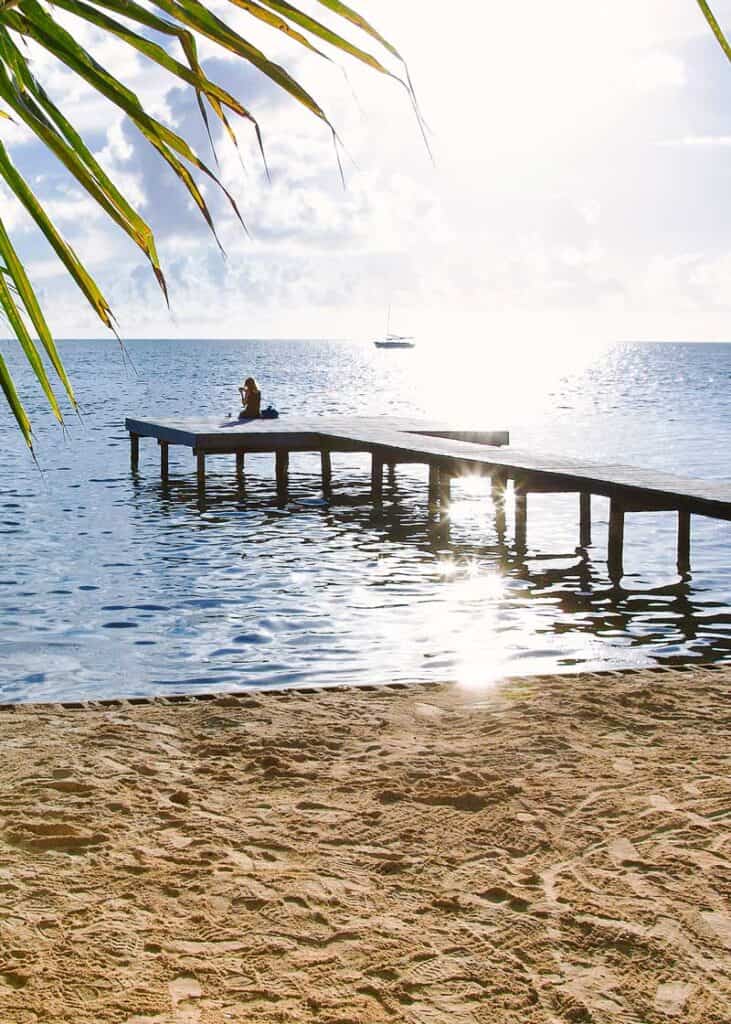
Learn more about little bugs that bite.
Sand Fleas: Nature’s Silent Danger
It’s hard to believe that something so small can cause so much trouble, but it’s true. Beware the bite of the sand flea when you’re on the beaches of Central or South America. If you suspect that any have started nibbling on your feet, seek medical attention. It’s better to be safe than sorry!
- About the Author
- Latest Posts
Bryan Haines is a co-founder and writer at The Buginator. And is working to make it the best resource for taking back the outdoors from biting, stinging pests.
He also blogs about travel at Storyteller.Travel and photography at Storyteller Tech. Bryan is a partner at Storyteller Media, a publishing company he runs with his wife, Dena.
